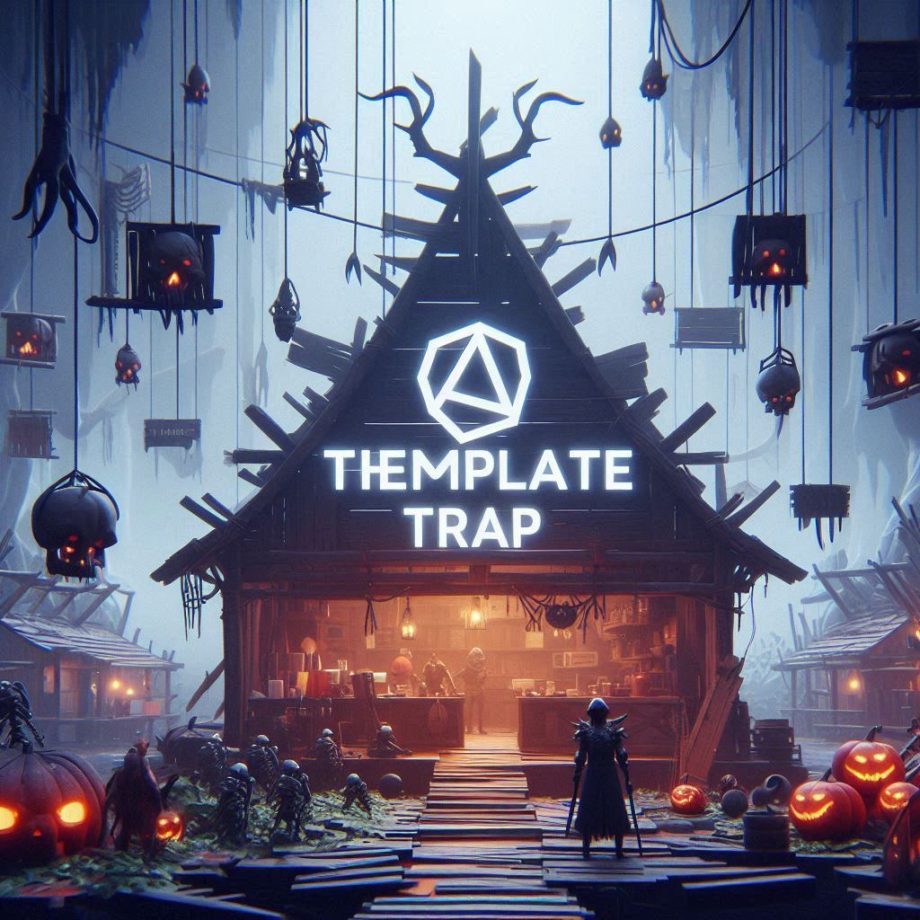Game developers flock to Unity and Unreal Marketplace for templates, but pre-built assets often create more problems than they solve. Here’s why relying on them could doom your project.
Reading Time: 7 minutes
Table of Contents
- Introduction
- 6 Reasons Why Game Templates Aren’t the Shortcut You Think
- When Templates Can Be Useful
- The Bottom Line

“Templates promise infinite choices but deliver fractured progress—the more you collect, the less you create.”
Introduction
The promise of pre-made game templates is tempting: “Save time! Ship faster! Launch like a pro!” Platforms like Unity Asset Store and Unreal Marketplace offer thousands of drag-and-drop solutions, from full-game templates to UI kits and AI systems. But while these assets seem like lifelines for indie developers and small studios, they often lead to creative stagnation, technical nightmares, and even commercial failure. Let’s break down six critical reasons why buying templates won’t magically fix your game development struggles—and might even make them worse.

6 Reasons Why Game Templates Aren’t the Shortcut You Think
1. They Kill Originality (Your Game Becomes a “Frankenstein’s Monster”)
Templates are used by thousands of developers worldwide. When you build your game using the same RPG framework, art pack, or UI system as everyone else, your project risks blending into a sea of generic clones. Players crave fresh experiences—not reheated asset-flip games. Templates also limit creative problem-solving, forcing you to design around pre-built systems rather than innovating.

2. Interconnected Systems Rarely Play Nice (Templates Ignore Critical Dependencies)
Game mechanics don’t exist in a vacuum—they’re deeply intertwined. For example, a Gameplay Ability System (GAS) might need to sync perfectly with movement logic, animation states, or networking code. Templates, however, are designed as isolated solutions. A movement system from Template A and a GAS from Template B weren’t built to communicate, forcing you to hack together compatibility. Even if both work flawlessly alone, their integration could break physics, desync multiplayer matches, or tank performance. Worse, templates rarely expose how their systems interact under the hood, leaving you to debug black-box code for weeks.
3. Hidden Technical Debt Will Haunt You
Even if a template seems compatible, its architecture likely clashes with your project’s unique needs. For instance, a template’s AI pathfinding might assume a grid-based level design, while your game uses procedural terrain. Retrofitting it creates spaghetti code that’s brittle to update. Poor documentation amplifies the problem: without clear APIs or comments, tweaking one system risks breaking three others.

4. You’ll Waste More Time “Fixing” Than Building
Templates market themselves as time-savers, but they often do the opposite. Customizing pre-built systems to fit your game’s needs can take longer than coding from scratch. Need to adjust the combat system? Redesign the inventory UI? Good luck reverse-engineering someone else’s spaghetti code. Many developers end up trapped in a loop of “fix the template, not the game.”

5. Zero Skill Development = Long-Term Stagnation
Relying on templates means skipping the hard (but essential) work of learning core development skills. You won’t master scripting, optimization, or system design if you’re just plugging in pre-made pieces. This creates a dependency cycle: the next time you hit a roadblock, you’ll buy another template instead of growing as a developer.
6. Performance Issues Are Inevitable
Templates are rarely optimized for your game’s scope. That “open-world RPG starter kit” might include bloated code, unoptimized assets, or unnecessary features that drag down performance. Suddenly, your game chugs on mid-tier devices, and players rage-quit over crashes—problems that could’ve been avoided with a lean, custom-built foundation.
7. The Market Can Smell a Template (And Players Hate It)
Savvy gamers and reviewers recognize recycled assets. Reddit threads, Steam reviews, and YouTube videos ruthlessly call out “template games,” branding them as lazy or cash-grabbing. This erodes trust before your game even launches. Worse, platforms like Steam are cracking down on asset-flip projects, making it harder to stand out in a crowded market.
When Templates Can Be Useful (If You’re Strategic)
While templates are risky as a project foundation, they’re not useless—if you deploy them intentionally:
- To Learn a Specific System: Studying a template’s code for niche mechanics (e.g., Unreal’s Gameplay Ability System or Unity’s DOTS) can accelerate your understanding of complex architectures. Treat them like textbooks, not blueprints.
- For Isolated, Non-Core Features: Need a polished pause menu UI or a generic save/load system? Templates work here because these features don’t require deep integration with your core gameplay loop.
- To Prototype or Experiment: Quickly test a VR interaction, a procedural generation algorithm, or a dialogue tree using a template. Once validated, rebuild it from scratch tailored to your game.

The Bottom Line
Templates aren’t evil—they’re just tools. The problem arises when developers use them as crutches rather than scalpels. If your goal is to ship a unique, high-quality game, invest in skills, not shortcuts. Master your engine, design systems that speak to each other, and build a project that couldn’t exist without your vision.
Originality always wins

